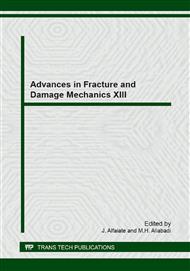p.417
p.421
p.425
p.429
p.433
p.437
p.441
p.445
p.449
Comparison between Subjective and Objective Measurement of Slipperiness
Abstract:
The objective of this study was to determine whether subjective measurement of slipperiness could be used as an subsidiary mean which made up for the demerit of indicators (roughness and coefficient of friction) of slipperiness. Two subjective rating methods for evaluating slipperiness—the Analytic Hierarchy Process (AHP) and the Friedman test—were used to measure perception of slipperiness on seven different floor surfaces contaminated with detergent solution (SLS). Twelve subjects wore the same footwear and walked on self-selected steps and cadence along the test floors. The safety criteria obtained with perceived slipperiness was similar with that of ANSI/NFSI B101.1. There was a higher correlation (r = 0.99) between the Friedman test and Ramp test parameter except for ground steel. There was also a high correlation (r = 0.92) between the Friedman and Rz parameter except for ground steel plate and profiled tile. The results showed that the perceived slipperiness could be used as indicator of slipperiness and supplement objective measurement of slipperiness.
Info:
Periodical:
Pages:
433-436
Citation:
Online since:
September 2014
Price:
Сopyright:
© 2015 Trans Tech Publications Ltd. All Rights Reserved
Share:
Citation:


